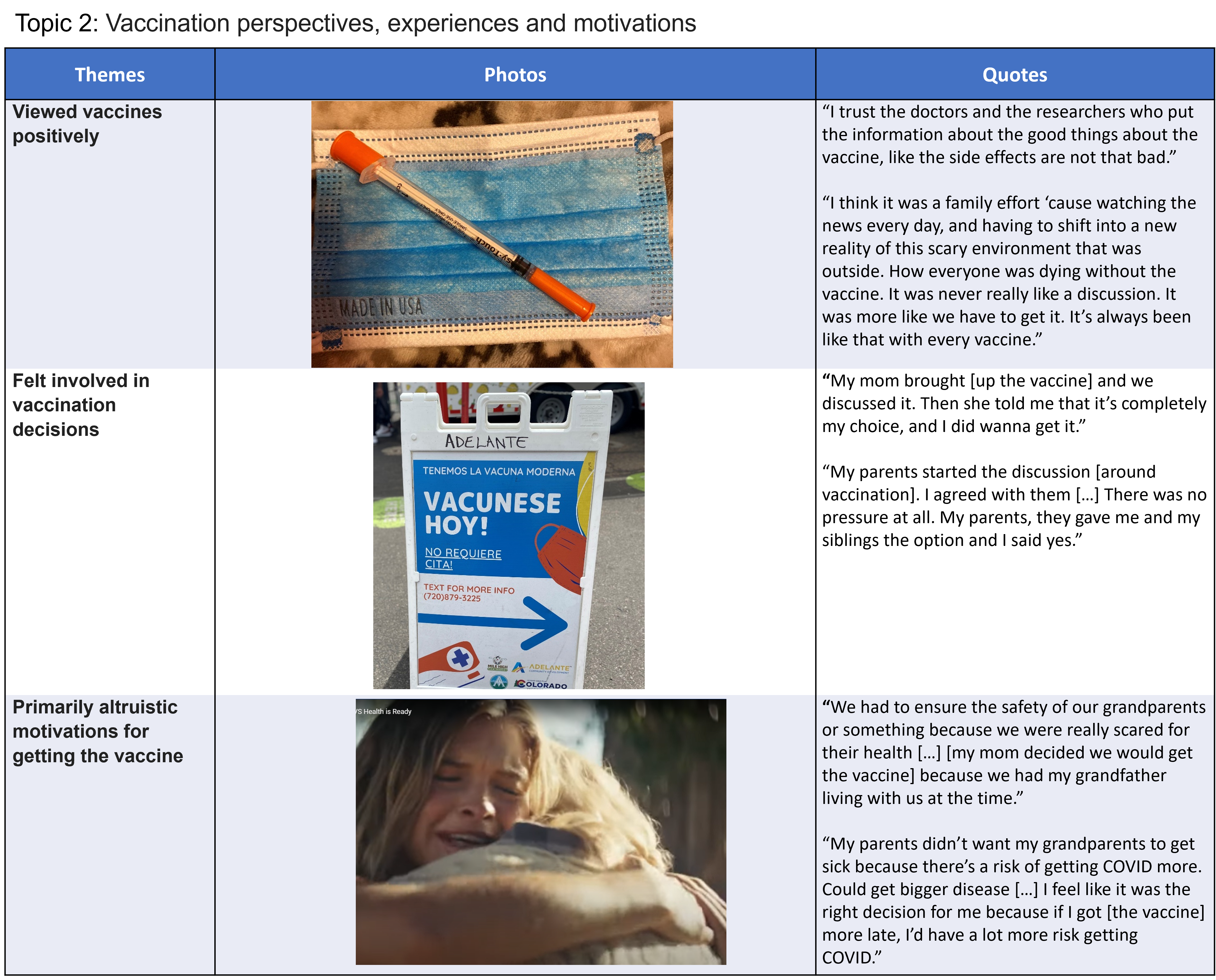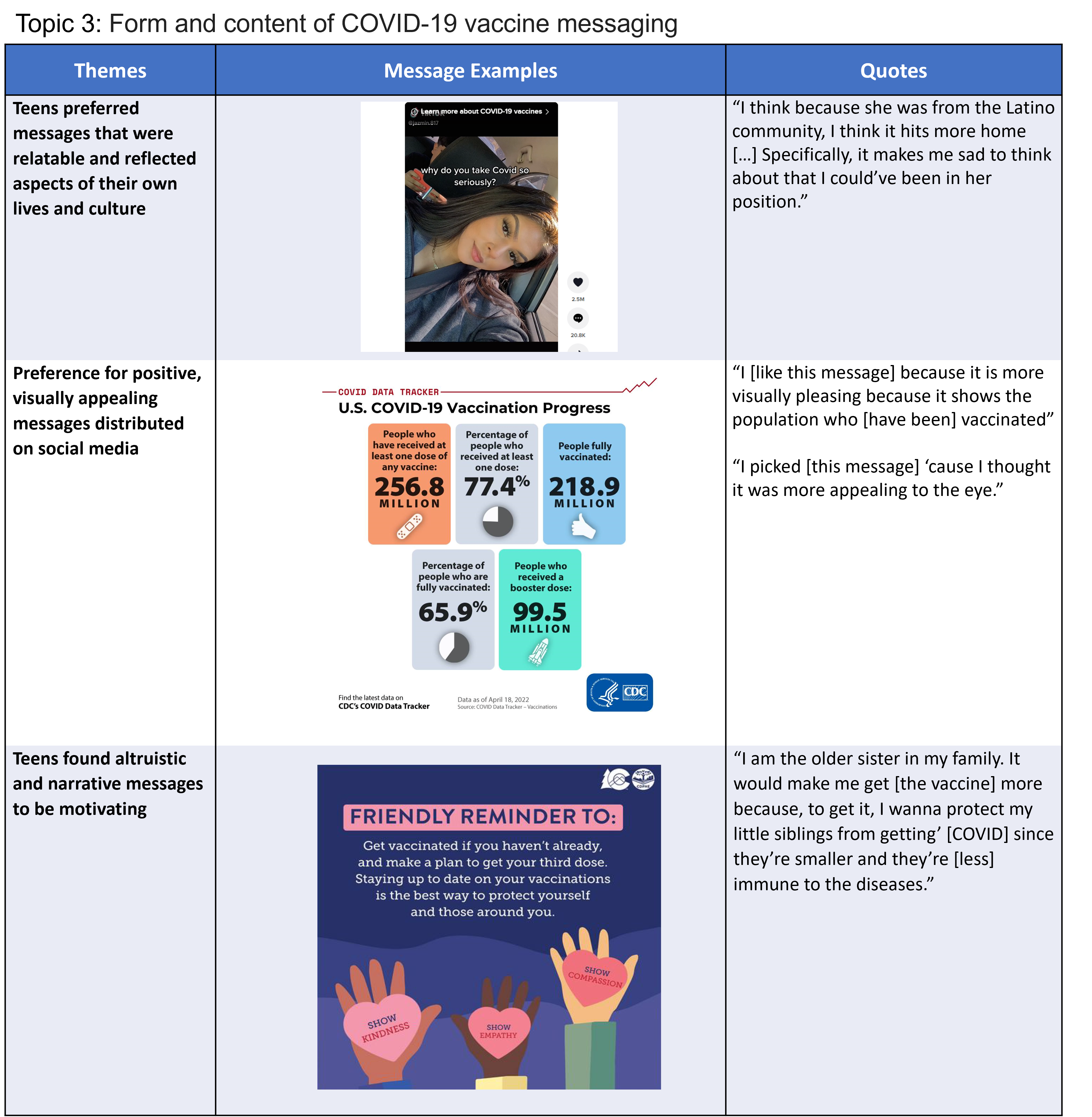Immunizations/Delivery
Session: Immunizations/Delivery 1
36 - Engaging Latinx Youth in PhotoVoice to develop Messaging to Improve COVID-19 Vaccine Uptake
Saturday, May 4, 2024
3:30 PM - 6:00 PM ET
Poster Number: 36
Publication Number: 36.1459
Publication Number: 36.1459

Andrea Jimenez-Zambrano, PhD, MPH (she/her/hers)
Assistant Professor
University of Colorado
Aurora, Colorado, United States
Presenting Author(s)
Background: The COVID-19 pandemic exacerbated healthcare disparities with higher infection rates and lower vaccination rates among Latinx communities. Although parents and caregivers are often responsible for vaccination decisions for minors, evidence shows that teens want to be part of vaccine decision-making. Therefore, it is crucial to refine vaccine advocacy, messaging, and communication to effectively target adolescents. Understanding Latinx teens’ experiences of the COVID-19 pandemic and their perspectives on vaccination can help the development of targeted messaging to promote vaccine uptake.
Objective: 1) Understand Latinx teen experiences during the COVID-19 pandemic and perspectives on vaccination. 2) Identify preferred forms and content of COVID-19 video messages to promote vaccination among Latinx teens.
Design/Methods: We used PhotoVoice, a participatory action methodology, to develop COVID-19 social messages with Latinx youth ages 14-17 living in the Denver Metro area. Participants took photos representative of the impacts of the COVID-19 pandemic on themselves and their communities. They also found and shared social media video messaging about COVID-19 vaccination. Participants attended three focus groups where they presented their photos/videos, developed narratives, and discussed their thoughts and perspectives. Focus groups were recorded and transcribed. We conducted thematic analysis synthesizing findings across focus groups.
Results: We engaged 8 Latinx teens between February-May 2022. Participants had 3 photo assignments each yielding a separate set of themes: 1) During the COVID-19 pandemic, teens felt isolated and lonely, missed out on important events, and described the negative impacts on the Latinx community. 2) Participants viewed vaccines positively and felt involved in vaccination decisions. Most had altruistic motivations for vaccination, choosing to protect loved ones at higher risk. 3) Teens preferred relatable, positive, visually-appealing, messages disseminated on social media.
Conclusion(s): The combination of photos and narratives elicited using PhotoVoice offered unique insight into the social isolation and heightened emotional burdens experienced by Latinx teens during the COVID-19 pandemic. Understanding Latinx teen experiences and their perspectives around vaccination facilitates the creation of meaningful messaging to promote vaccine uptake. Based on our findings, vaccine messaging targeting Latinx youth should leverage social media platforms and emphasize messages that reflect their personal and cultural values.
.png)


